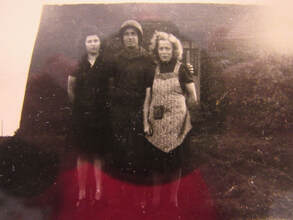 The Terezin ghetto and concentration camp were built out of a small city forty miles north of Prague, Czechoslovakia. Contained within the walls of a large fortress built in the late 18th century, the major part of the city was converted in 1941 by the Nazis to be a Jewish ghetto where Jews from Czechoslovakia, Germany, and Austria could live and work comfortably, protected from the vagaries and stresses of war. In a smaller fortress across the river, a prison and a more common concentration camp were built to control those who disturbed the calm of the ghetto. The ghetto housed Jewish intellectuals, musicians, writers, scientists, philosophers, artists, and civic leaders from the invaded nations. There was large adult choir made up of residents that gave routine concerts; a number of chamber orchestras played at various times; distinguished composers created new works, including a children’s operetta; writers, professors, and actors gave lectures; and there was a library – a hundred thousand books – that had fifteen full-time librarians. Residents strolling the streets saw freshly painted houses, gardens, and renovated barracks, as well as a bakery full of fresh bread and even a candy shop that provided bon-bons to be eaten in little cafes along the sidewalk. Some German officials described it as a “spa” for the Jewish elderly. In late 1943, the King of Denmark wanted to know the condition of the 466 Danish Jews the Nazis had recently deported to Terezin. Of course, the Nazis said. They would be more than happy to show off their model city. The inspection was held on June 23, 1944 and the inspectors found all those things described above. The Danish delegation, plus representatives of the Red Cross visited freshly painted rooms in the barracks, which held not more than three people at one time; saw large bathrooms with sinks and showers; and noted the bunk beds with mattresses filled with straw. The delegation walked a predetermined path and spoke to Jewish residents along the way. The choir gave a concert. There was no mention of the smaller fortress. A movie film was shot as the inspectors walked the city. The film’s director was even a famous Jew. That film – a documentary film of Jewish resettlement – was what Hitler planned to show to the rest of the world. It would confirm the Terezin that the Third Reich had been describing to other nations during the last two years. It would help dispel all the vicious rumors concerning the supposed “extermination” camps. The film would show the glory of “the city that Hitler gave to the Jews.” The film, however, did not reveal the truth. Committed to the coming inspection, the Germans immediately launched a beautification program for the ghetto – “Operation Embellishment.” The day before the inspection, many of the inmates of Terezin were sent to other camps to decrease the perceived population. Terezin normally housed 5,000 people but at the height of the war, 55,000 people were crowded inside the fortress. Those barrack rooms with no more than three people typically held hundreds; full barracks typically held thousands. Those large bathrooms with sinks and showers were never connected to water; the straw in the mattresses were home to blood-sucking insects. The questions asked by the inspectors had been written and handed out beforehand to the residents, along with the answers. Anyone answering an unofficial question or giving a non-approved answer were deported. The choir’s director was deported to Auschwitz two months afterwards and gassed the following day. Those bakeries, shops, and cafes were fake: props to give the impression of comfort. Those loaves of fresh bread were never seen again. At the time, though, the inspection was a success. The Danish delegation and the Red Cross were duly satisfied that the Jews were being treated well enough. They should have looked closer. Terezin wasn’t a typical concentration camp; it was a redistribution camp whose appearance had been managed as Nazi propaganda. Beginning in 1942, Jews were sent to the Terezin ghetto and then deported to other ghettos, concentration camps, and killing centers in Nazi-occupied eastern Europe. Once at their destination, the Jews were either immediately murdered or deported to other camps. Terezin had direct rails to Auschwitz, Majdanek, and Treblinka. Between October 16, 1941, and when it was liberated on May 8, 1945, more than 155,000 Jews passed through Terezin. Eighty percent of them died after being deported, or died in the ghetto itself from starvation or disease. There were more than 16,000 still imprisoned when it was liberated. There was no crematorium in Terezin, but the local death rate grew so high that one was built south of the ghetto, capable of handling almost 200 bodies a day. There were 15,000 children sent to Terezin. Only 132 children were known to have survived. But, while they were there, children found paper and drew what they saw. They also wrote poems or descriptions of what they saw, thought, or dreamed. They hid the papers in cracks in the walls around town. Many thousands of these honest depictions of life in Terezin have been found and are now on display as part of the museum and memorial. What Hitler wanted was a charade that he could display to the world so that the world would look away from the reality of what the Third Reich was doing. In today’s parlance, it was the control of the media for the purpose of fooling the masses, and it worked remarkably well for a long time. Unfortunately, the film was never released. The production was halted as soon as it was obvious that Germany was losing the war. Snippets of the film would be shown at the Nuremburg trials. If you make it to the Prague area, there are many guided tours available or you can visit Terezin on your own. There are several websites that give more information.
2 Comments
Deb
8/11/2020 09:58:06 am
Happy to an inspiration for a new writing. Your research gave additional details than we got on the guided tour. Thanks.
Reply
Donna Bogan
8/11/2020 01:13:46 pm
What evil flourished in that facade of paradise! Thanks for sharing this history. I have never heard of this place before.
Reply
Leave a Reply. |
AuthorDon Willerton has been a reader all his life and yearns to write words like the authors he has read. He's working hard at it and invites others to share their experiences. |

 RSS Feed
RSS Feed